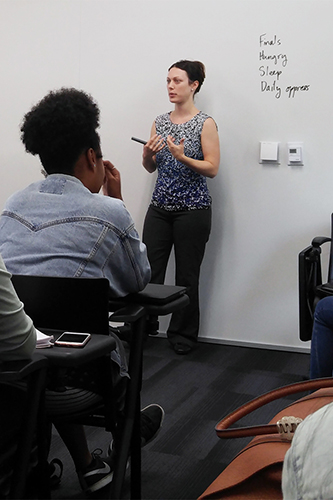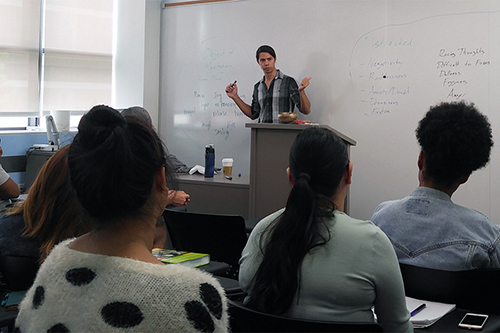Stress Management Through Meditation
By nature, college students are stressed. In fact, four out of 10 reported in an Associated Press and mtvU survey conducted in 2008 that they were stressed often. And one in five said they were stressed most of the time. This stress can lead to a variety of problems, both mental and physical. Because of the extra commitment that the BUILD program requires, as well as that of a research career in general, scholars participating in the Summer Undergraduate Research Gateway to Excellence (SURGE) program were provided a Stress Management workshop.


There is a multitude of ways to manage stress in a healthy manner. One such technique is meditation. Research suggests that people who meditate feel less anxiety and depression and enjoy life more fully. Meditation has also been shown to lower blood pressure and improve the immune system.
In the interactive workshop, scholars explored what causes stress, symptoms of stress and practiced meditating. They learned about what meditation is and debunked a few myths about meditation. “Distractions are a part of meditation,” said Adam Eurich, who taught the class with former CSULB student and BUILD Graduate Assistant Cassandra Gearhart. He said that meditation develops a relationship between focus and distraction, helping you develop the skill of retraining your focus where you want it to go.
Negative emotions, such as anger, narrow your focus and hijack your mind. It also takes but a moment –about one second – to get caught up in them. Conversely, positive emotions, like happiness, broaden your awareness and it takes a bit more time – about 10 seconds – to keep them going. However, when you lean toward positive emotions, they grow. Meditation is a tool for cultivating that positive lean.
In addition to practicing one meditation technique, BUILD Scholars were given a tool, called “The Six Rs,” to help them in further meditation practice:
- Recognize – notice that you are distracted
- Release – let go of the distraction
- Relax – get back to your relaxed state
- Re-smile – invite relaxation with this physical action
- Return – re-focus on your original medication focal point
- Repeat – as often as necessary
The goal, said Eurich, is to spend about 70% to 80% of your meditation time in a relaxed state. “A distracted medication,” he said, “where you cycle through the six Rs several times is good. It means you are practicing what you need.”





